The Common Core standards, if they separate the learning of skills from content and understanding, point teachers in the wrong direction.
Critiques posted on a Common Core mathematics blog examining the standards make similar points. A comment on the calculation of area argues that the National Assessment of Educational Progress (NAEP)'s "stark revelation of the extent to which students fail to understand the concept of area and lack basic problem solving skills warrant not a simple tweaking of current methodology, but a complete rethinking of how the topic of area is presented."
The authors of the post explain that "mathematics curricula compartmentalize math skills into discrete chunks" because "it's easier to teach and easier to write tests." However, this "math bite approach to imparting skills ... institutionalizes a testing regime, at the expense of developing students' thinking skills." The authors conclude, "Even if they [students] learn every standard, the parts remain disjointed without students gaining the real math wisdom that comes from synthesizing parts into a whole." Unfortunately, when the authors "examined CCSSI's approach to the topic of area," they found "little that holds promise ... CCSSI completely overlooks the value of emergent learning through requiring a sequence of problems of ever-increasing complexity."
I recently have found an ally in my campaign to morph content, skills and understanding in online videos by Dan Meyers, a former high school math teacher based in the San Francisco Bay area. Meyers argues in "Math class needs a makeover" that math classes need to focus on conceptualizing and solving problems rather than memorizing what are for students meaningless formulas.
Meyers' ideas fit in nicely with The Algebra Project, an approached developed by Bob Moses, a Civil Rights activist from the 1960s, who promotes the idea that all children can master math. In the Algebra Project, Moses lays out a five-step approach
1. Students participate in a physical experience, like a trip, where they see examples of what they are studying (e.g., arches, geometric shapes, suspension bridges).
2. Following the trip, students draw pictorial representations or construct models of what they have observed.
3. Next, they discuss and write about the event in their everyday dialect or intuitive language. Moses calls this stage "People Talk."
4. Their oral and written reports are then translated into the standard dialect or structured language as part of "Feature Talk."
5. In the last step, students develop symbolic or Algebraic representations that describe what they have learned. They present these representations in class and explore how they can be used to describe other phenomena.
The Dan Meyers video reminded me of "math" experiences I had with my own now adult children and a project I participated in at a summer work camp for neighborhood teenagers from Brooklyn in the 1970s and 1980s.
When my son was a high school junior, I got a call from the school telling me that he was failing chemistry. I asked if there was anything I could do to help him and was told that, unless I could teach him the missed work myself, his fate was already sealed. My son and I decided to take up the challenge but the problem remained that I had not learned much chemistry in high school and remembered nothing other than that I hated both the subject and the teacher. One glance at the textbook and the periodic table just brought back nightmares.
We tried doing some homework problems together and then somehow we realized, I don't recall whether it was him, me, or some kind of collaborative insight, that chemistry was really algebra. Instead of memorizing formulas, which is what they were doing in class and had completely alienated him, we had to solve the problems. In chemistry the addition of energy or some kind of reagent "balanced" the two sides of the equation. Our goal was always to establish the BALANCE. Our discovery was a little like the scene in the movie Stand and Deliver about math teacher Jaime Escalante where the student realizes that the entire point of math was to "fill the hole" by balancing both sides of the equation.
Another time my step-daughter was planning to return to graduate school and was practicing for the standardized test known as the GRE. She kept on getting stumped by the math and called me for help with one particular sample problem.
Thirty people are at a costume party. Sixteen are dressed as Dracula and 14 are dressed as Wolfman. If all the Wolfmen stay at the party, how many additional Draculas have to arrive before they make up two-thirds of the guests?
I told her give me five minutes and I would call her back. I set up a table and began to add. There are 16 Draculas and 30 people. If four more Draculas arrive there will be 20 and 34, still short of two-thirds. If another four arrive there will be 24 and 38, which is still short. But if another four, or a total of twelve arrive, we will have 28 Draculas and 42 guests, which is exactly two-thirds.
My step-daughter was glad to get the answer, but wanted a formula to memorize so she could use it for other problems. I replied the key was not to memorize formulas but to solve problems. That night I had Draculas, Wolfmen, and Bob Moses running through my head and in the morning I called her back. Once you solved the problem you could construct the formula to describe your solution.
Originally you have 16 Dracula among the 30 people. 16 plus something equals 30. The kicker is we want the Draculas to be two-thirds of the party-goers. 16 plus some unknown number is equal two two-thirds of thirty plus the same unknown number. Make X the unknown number.
16 + X = 2/3 (30 + X)
Whatever you do to one side of the equation you have to do to the other to maintain BALANCE.
Multiply both sides by three.
3 (16 + X) = 2(30 + X)
48 + 3X = 60 + 2X
Subtract 28 from both sides.
3X = 12 + 2X
Subtract 2X from both sides.
X = 12
I think these two examples just represent good standard school teaching that can be applied in any classroom. The summer camp work project was a little different and illustrates the importance of real world problem-solving. I was working with teams of six teenagers and our goal was to re-roof cabins in the woods. We had to load 90 pound rolls of 3 foot by 50 foot tar paper on a flat bed truck, drive as close to the cabin as possible, carry the 90 pound rolls of tar paper to the cabin, and then carry 90 pound rolls of tar paper up the ladder to the roof. I think you get my point. These were heavy rolls of tar paper.
I asked my work team how many rolls of tar paper they thought we needed for the roofing job and suggested we could calculate the amount we needed using math. They did not want to be bothered. It would be easier to carry the tar paper up to the roof than it would be to solve the problem, or so they thought.
By the time we got the rolls of tar paper to the work site they were rethinking their decision. It was hot and the tar paper was heavy. The first teen struggled getting up a few rungs of the ladder but finally made it. He called down "this is too hard. We better learn the math." We measured the roof and then calculated exactly how many three-foot wide fifty-foot long rolls of tar paper we needed for the job. It was still hard getting them up the ladder, but we only took as many as we actually needed. Real world math had triumphed over student resistance.
Maxine Greene, a 20th century educational philosopher based at Teachers College in New York City wrote about "creative imagination" as the key to learning and called on teachers to unleash the "creative imagination" of their students. Greene argues, "teaching and learning are matters of breaking through barriers -- of expectation, of boredom, of predefinition." She believes, "To teach ... is to provide persons with the knacks and know-how they need in order to teach themselves" and "put into practice in their own fashion what they need to join a game, shape a sonnet, or devise a chemical test." To me, Greene's ideas mean teachers have to help students identify problems and support their efforts to create their own solutions.
As a teacher, I feel I am at my best when I identify problems and search for solutions along with my students. Recently, I was working with a class of social studies teachers examining Social Darwinism and late 19th and early 20th century pseudo-scientific justifications for racism. The discussion got a little technical as the teachers grappled with what Charles Darwin, the founder of modern evolutionary biology, and Herbert Spencer and Andrew Carnegie, Social Darwinians who believed human evolution justified social inequality and capitalist society, actually knew about the mechanisms of biological evolution.
The answer is really very little. Most of our current scientific knowledge about genetics came long after they died. Somehow I got involved in explaining the differences between "trait" or "structural" genes and "regulator" genes. Based on my reading of the work of Stephen J. Gould, a trait gene, what we commonly just call genes, provide the instructions that determine most aspects of biological development such as the existence of nervous systems that provide for the possibility of intelligence or for the existence of melanin or skin pigment. The regulator genes interact with the "trait" genes and "tell" them how fast to operate and when to turn on or shut off. According to Gould, the on-and-off and rate of operation affects the extent of brain development and intelligence as well as the depth of skin color.
The "trait" genes that produce the human brain and nervous system are not fundamentally different from the "trait" genes operating in other mammals. However, the regulator genes that control the "trait" genes turn down the growth rate much more slowly. This process, which allows for the retention of juvenile or even prenatal rates of growth as organisms mature, is called neoteny and explains both human intelligence and why some people are darker than others.
One of my great joys as a teacher is that I get to learn and problem-solve along with my students. In this case, I was getting a lot of blank looks from my class when I hit upon an idea that would help me solve my problem and explain the difference between structural and regulator genes. We had a sink in the classroom. I stopped the drain, turned the water on full throttle, and the sink began to fill. The sink and the water supply represented the structural genes. I gradually turned the spigot and shut off the water flow. The spigot represented the regulator genes that control the water flow. If these genes turn off at birth there is no water in the sink. If they turn off gradually, water accumulates. If they don't turn it off at all, the water overflows.
I worry that with the Common Core Standards focus on mastering skills through repetitive practice, students will never learn to find their own solutions to chemistry or geometry problems, challenge established authority, imagine creatively, and adjust the flow of water. Most students will not learn very much and what they do learn, they will not learn better.
Related
Sign up for Peacock to stream NBCU shows.
to stream NBCU shows.
